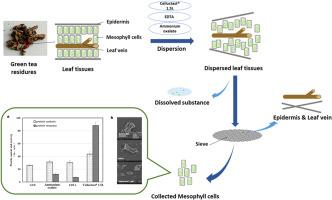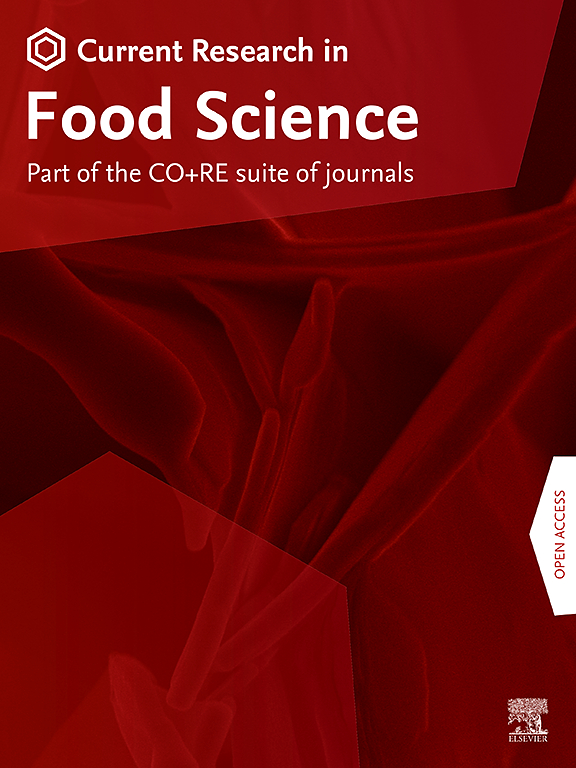从绿茶残渣中有效收集富含蛋白质的细胞:叶蛋白质生产的创新工艺
IF 6.2
2区 农林科学
Q1 FOOD SCIENCE & TECHNOLOGY
引用次数: 0
摘要
绿茶渣(GTR)含有大量蛋白质。然而,传统方法无法有效提取绿茶渣中的蛋白质。因此,一种新方法使用乙二胺四乙酸(EDTA)、草酸铵或 Celluclast® 1.5 L 分散叶片组织并收集叶肉细胞以富集蛋白质。与乙二胺四乙酸或草酸铵处理相比,Celluclast® 1.5 L 处理获得的叶肉细胞数量最多,约为 2.7 × 106 g-1 GTR。收集到的叶肉细胞数量与葡萄糖和木糖的提取率呈线性正相关,表明纤维素和半纤维素是影响细胞收集的关键成分。Celluclast® 1.5 L 处理使收集的叶肉细胞中的蛋白质含量富集了 1.65 倍,蛋白质含量达到 50%,蛋白质回收率为 88%,为食品工业提供了一种获得高质量叶片蛋白质的新方案。本文章由计算机程序翻译,如有差异,请以英文原文为准。

Effective collection of protein-enriched cells from green tea residue: An innovative process for leaf protein production
Green tea residue (GTR) contains a high protein content. However, the protein in GTR can't be effectively extracted using traditional methods. Thus, a novel method using ethylenediamine tetraacetic acid (EDTA), ammonium oxalate, or Celluclast® 1.5 L were used to disperse leaf tissues and to collect mesophyll cells to enrich the protein. Compared with EDTA or ammonium oxalate treatment, Celluclast® 1.5 L treatment achieved the highest amounts of mesophyll cells, about 2.7 × 106 g−1 of GTR. The number of collected mesophyll cells was positively and linearly correlated with the extraction rate of glucose and xylose, indicating that cellulose and hemicellulose were key components influencing cell collection. Celluclast® 1.5 L treatment enriched the protein content by 1.65 times in collected mesophyll cells to 50% protein content with a protein recovery of 88%, providing a novel scheme to obtain high-quality leaf protein for the food industry.
求助全文
通过发布文献求助,成功后即可免费获取论文全文。
去求助
来源期刊

Current Research in Food Science
Agricultural and Biological Sciences-Food Science
CiteScore
7.40
自引率
3.20%
发文量
232
审稿时长
84 days
期刊介绍:
Current Research in Food Science is an international peer-reviewed journal dedicated to advancing the breadth of knowledge in the field of food science. It serves as a platform for publishing original research articles and short communications that encompass a wide array of topics, including food chemistry, physics, microbiology, nutrition, nutraceuticals, process and package engineering, materials science, food sustainability, and food security. By covering these diverse areas, the journal aims to provide a comprehensive source of the latest scientific findings and technological advancements that are shaping the future of the food industry. The journal's scope is designed to address the multidisciplinary nature of food science, reflecting its commitment to promoting innovation and ensuring the safety and quality of the food supply.
 求助内容:
求助内容: 应助结果提醒方式:
应助结果提醒方式:


